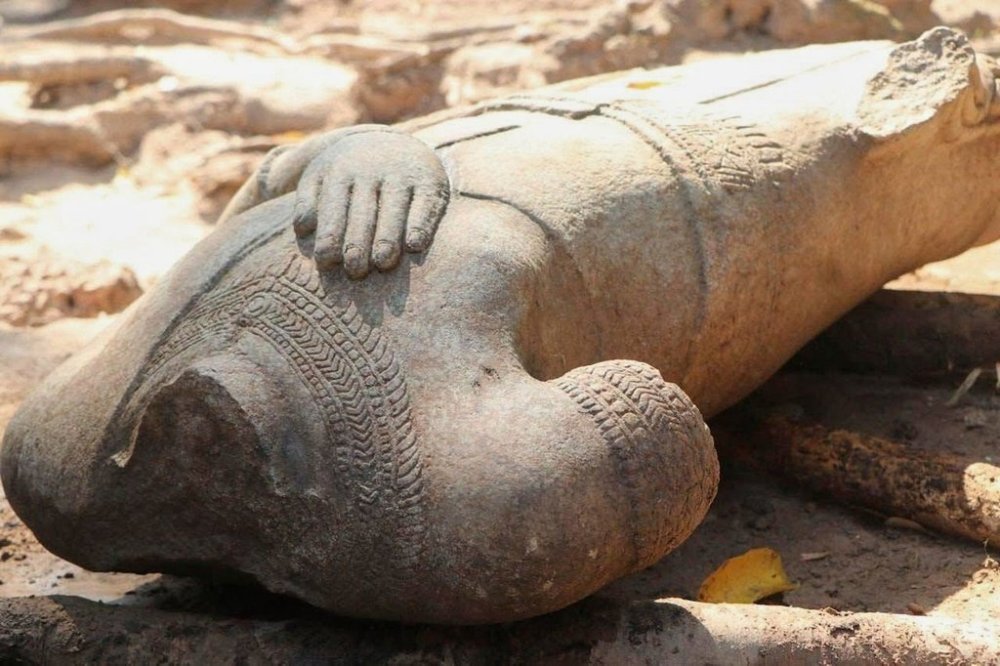The torso of a Buddha statue has been found at Cambodia’s Angkor temple complex
Advertisement
Read this article for free:
or
Already have an account? Log in here »
To continue reading, please subscribe:
Monthly Digital Subscription
$0 for the first 4 weeks*
- Enjoy unlimited reading on winnipegfreepress.com
- Read the E-Edition, our digital replica newspaper
- Access News Break, our award-winning app
- Play interactive puzzles
*No charge for 4 weeks then price increases to the regular rate of $19.95 plus GST every four weeks. Offer available to new and qualified returning subscribers only. Cancel any time.
Monthly Digital Subscription
$4.99/week*
- Enjoy unlimited reading on winnipegfreepress.com
- Read the E-Edition, our digital replica newspaper
- Access News Break, our award-winning app
- Play interactive puzzles
*Billed as $19.95 plus GST every four weeks. Cancel any time.
To continue reading, please subscribe:
Add Free Press access to your Brandon Sun subscription for only an additional
$1 for the first 4 weeks*
*Your next subscription payment will increase by $1.00 and you will be charged $16.99 plus GST for four weeks. After four weeks, your payment will increase to $23.99 plus GST every four weeks.
Read unlimited articles for free today:
or
Already have an account? Log in here »
Hey there, time traveller!
This article was published 12/03/2025 (298 days ago), so information in it may no longer be current.
PHNOM PENH, Cambodia (AP) — Archaeologists in Cambodia are celebrating an unexpected find at the country’s centuries-old Angkor temple complex: the torso of a statue of Buddha that matches a head found nearly a century ago at the same site.
The torso, believed to be from the 12th or 13th century, was discovered during a dig by a team of Cambodian and Indian experts last month at Angkor’s Ta Prohm temple. It was found along with 29 fragments that appeared to be part of the same statue, archaeologist Neth Simon said this week.
It stands at 1.16 meters (3 3/4 feet) tall and is in the Bayon art style, associated with Angkor’s Bayon temple.

“It was a big surprise when we unearthed this sculpture because all we’d found so far were small pieces,” Neth Simon told The Associated Press by phone from Siem Reap province.
She described the statue’s design as displaying carved jewelry and robe and sash, with a unique left-hand gesture across the chest — “an uncommon representation in Khmer (Cambodian) art.”
The statue’s presumed head was discovered at the same temple in 1927 during the French colonial era, and is currently kept at Cambodia’s main National Museum in the capital Phnom Penh. Neth Simon said the torso was found about 50 meters (yards) away from the site where the head was discovered, and that an optical electronic scan confirmed they were a match.
A near-complete reconstruction of the status is possible, Neth Simon added, now that only the right hand of the statue remains missing. Her team will ask the Minister of Culture and Fine Art for approval to reattach the head and body of the sculpture to make it whole for public display.
The Angkor site sprawls across some 400 square kilometers (155 square miles), containing the ruins of capitals of various Cambodian empires from the 9th to the 15th centuries. Scholars consider it to be one of the most important archaeological sites in Southeast Asia.
The site is Cambodia’s most popular tourist attraction and in 2024 attracted about a million international tourists, according to Cambodia’s Tourism Ministry.
The excavations aim to organize and preserve the numerous art objects scattered throughout the Ta Prohm complex, highlighting the ongoing efforts to protect and understand Cambodia’s rich cultural heritage, the Apsara Authority says.
Neth Simon said she would be delighted if the statue’s pieces could be reassembled after being far apart from each other for a century.
“As an archaeologist, I would be really happy,” she said.

